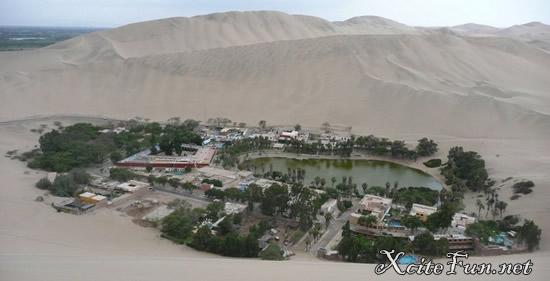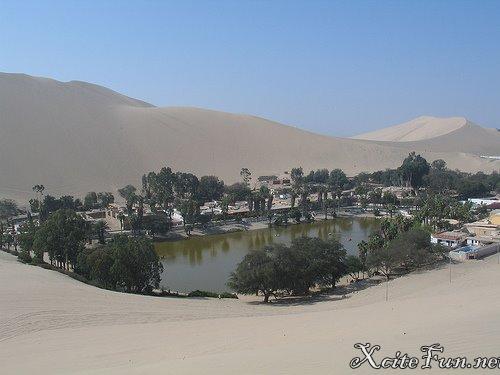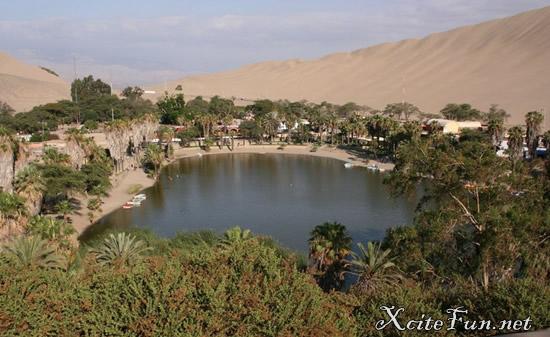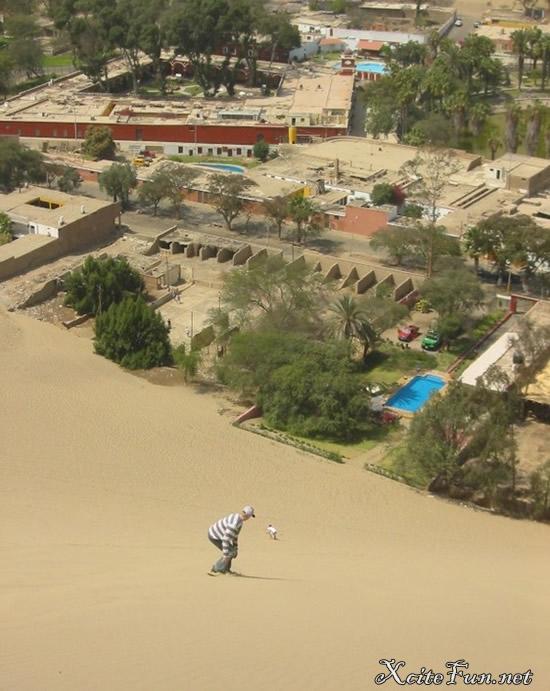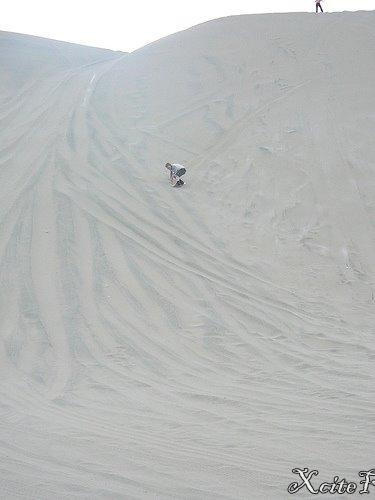Shimmering beneath the scorching sun of the Peruvian desert is an
extraordinary sight - a tiny settlement, complete with lagoon, lush palm
groves, carob trees, cafes, neatly clipped lawns, 100-strong population
and even the odd swimming pool.
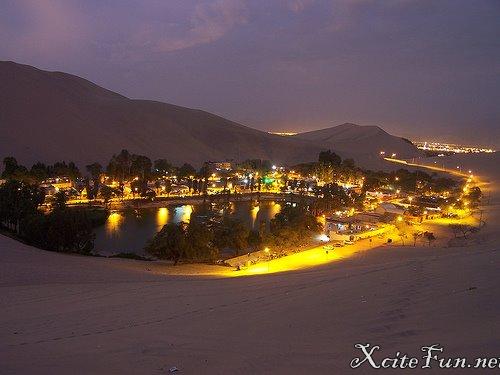

For thousands of years, Huacachina, otherwise known as the 'oasis of
Americas' - there is only one - has been a beacon of green, hidden deep
amid hundreds of miles of barren desert. Over the centuries, its glimmering
waters have saved the lives of hundreds of sun-addled travellers,
staggering in from the heat with their mules.


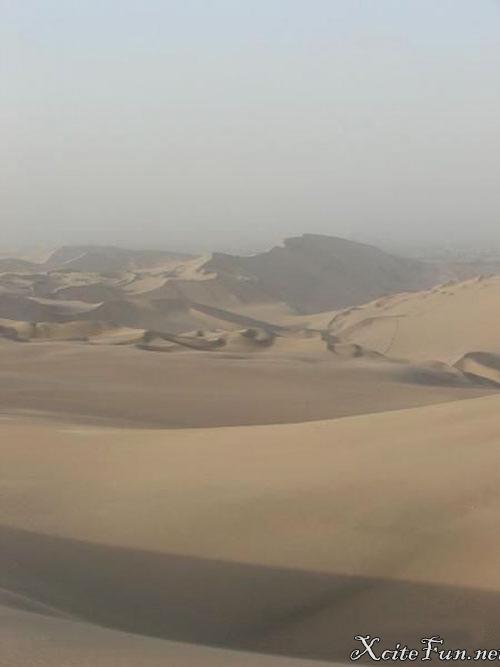
More recently, however, visitors have been flying in from all over the world
to relax in the shade of the palm trees, sandboard on the dunes and, most
importantly, take the waters. Because this tiny handkerchief of green is the
Lourdes of Peru.
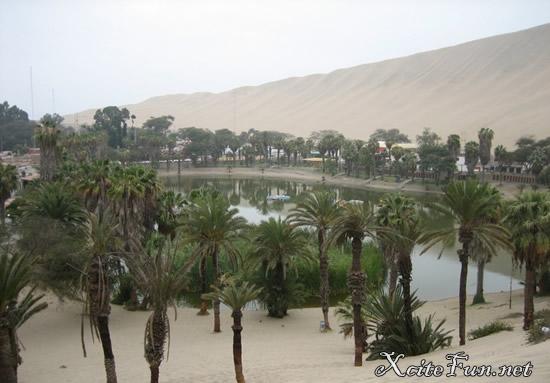


Its gleaming waters - which spring from a river source deep underground -
reportedly contain medicinal properties, particularly effective for the cure of
skin and rheumatic illnesses. Today, however, the tiny community in the
south of the country is under threat. The oasis is running low because,
with global warming causing ever-worsening water shortages, the nearby
city of Ica (population 200,000) is plundering its underground river for
drinking water.

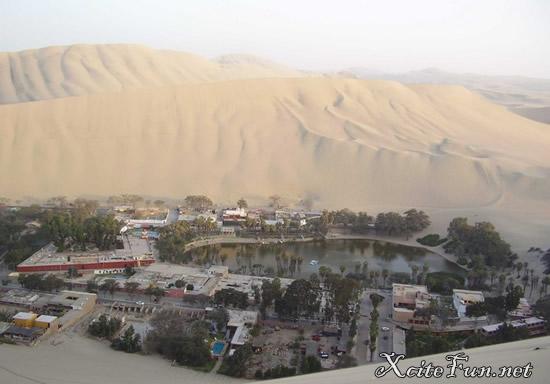
When water levels recently reached a record five metres below average,
local authorities declared a state of emergency.
